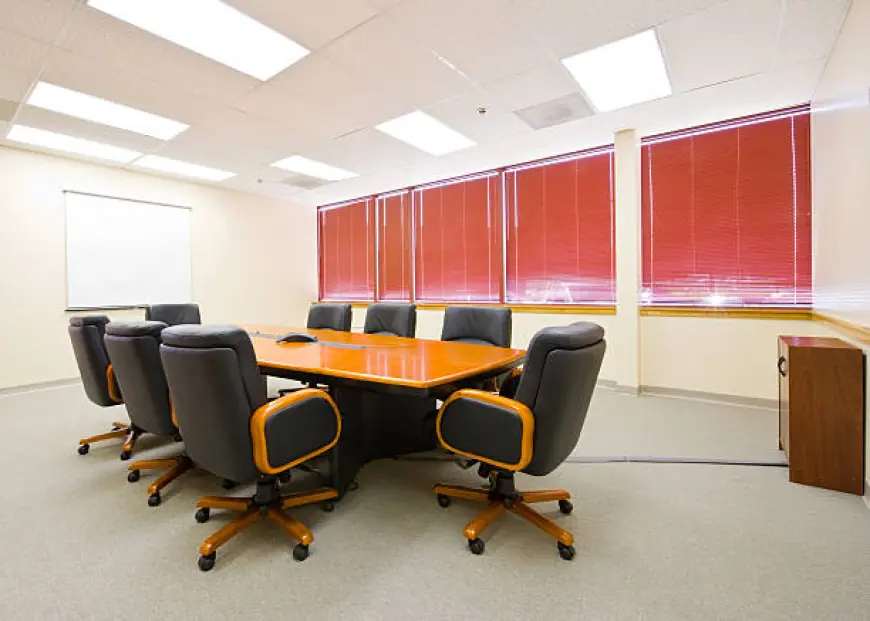Executive Boardroom Spaces for Corporate Success
In today’s fast-paced and competitive business environment, the importance of having a well-designed, functional, and professional boardroom cannot be overstated.

In today’s fast-paced and competitive business environment, the importance of having a well-designed, functional, and professional boardroom cannot be overstated. Executive meetings often determine the direction of a company, and the physical environment in which these discussions take place plays a crucial role in shaping outcomes. Executive boardroom spaces are no longer just rooms for meetings—they are strategic assets that foster collaboration, inspire leadership, and symbolize corporate stature. This article explores why investing in quality executive boardroom spaces is essential for corporate success and how modern design elements can enhance executive decision-making.
The Strategic Importance of Executive Boardroom Spaces
The boardroom is the nerve center of executive decision-making. It is where critical conversations occur, where corporate strategies are born, and where leadership aligns on the company’s vision and goals. A well-appointed executive boardroom reflects the company’s values and professionalism, setting a tone that encourages focused discussion and strategic thinking.
Executives often meet with stakeholders, partners, investors, and clients in these spaces. The design and functionality of the boardroom can influence perceptions and confidence levels. A cluttered, outdated, or poorly lit room may convey a lack of organization or professionalism, while a modern, thoughtfully designed boardroom inspires trust and confidence.
Elements of Effective Executive Boardroom Spaces
1. Ergonomic and Comfortable Furniture
Comfort is a critical factor during long executive meetings. Executive boardroom spaces should feature ergonomic chairs and spacious tables that allow participants to maintain focus without physical discomfort. The furniture should balance comfort with formality, reflecting the corporate identity while ensuring practicality.
2. Advanced Technology Integration
Incorporating the latest technology enhances communication and productivity. Boardroom executive suites equipped with high-definition video conferencing tools, interactive whiteboards, and seamless connectivity allow remote participation and easy sharing of digital content. This is especially important in global corporations where board members may be located in different regions.
3. Optimal Acoustics and Lighting
Good acoustics ensure that all voices are heard clearly without echo or background noise distractions. Similarly, lighting plays a pivotal role in setting the right ambiance. Natural light is ideal, but adjustable artificial lighting allows for control over brightness during presentations or video calls.
4. Aesthetic and Brand Representation
The visual appearance of the boardroom should align with the company’s branding and culture. Thoughtful use of colors, materials, and artwork can create an inspiring environment that reflects the company’s ethos and values. This visual reinforcement helps executives stay connected to the company’s mission during strategic discussions.
The Role of Boardroom Executive Suites in Corporate Success
Boardroom executive suites are specialized, high-end office spaces designed specifically to meet the needs of senior executives. These suites often include private meeting rooms, lounge areas, and amenities that facilitate both formal and informal interactions. The exclusivity and privacy offered by such suites enable confidential discussions and promote a culture of trust among leadership teams.
Moreover, having dedicated boardroom executive suites within corporate headquarters or offices signals the company’s commitment to leadership excellence. It acts as a symbol of status and respect for the decision-makers, which can enhance executive morale and pride.
Enhancing Collaboration and Innovation
Executive boardroom spaces are also hubs of collaboration. Modern layouts encourage interaction by incorporating flexible seating arrangements and open spaces that can be adapted for different meeting formats. Collaborative technologies, such as digital brainstorming tools and real-time document sharing, support innovation by making it easier for teams to ideate and iterate together.
Innovative boardroom designs also include breakout areas adjacent to the main meeting space, allowing for smaller group discussions or quick one-on-one conversations without disrupting the larger meeting flow.
Corporate Image and Client Impressions
Clients, investors, and partners often visit executive boardroom spaces to gauge the professionalism and capacity of a company. A state-of-the-art, elegantly designed boardroom creates a positive first impression and fosters confidence in the company’s ability to deliver results. The environment reflects not only the company’s current status but also its ambitions for the future.
The subtle cues—from high-quality furnishings to technology sophistication—communicate stability, foresight, and attention to detail. These factors are critical when negotiating deals or securing investment.
Adaptability in Boardroom Design
Business needs and corporate structures evolve rapidly. Thus, executive boardroom spaces must be adaptable to changing requirements. Modular furniture, wireless technology, and multipurpose spaces allow for easy reconfiguration to suit various meeting types—whether it’s a small strategic session or a larger board meeting.
Flexibility also extends to environmental controls such as temperature, lighting, and sound systems, which can be adjusted quickly to enhance comfort and functionality.
Sustainability in Executive Boardroom Spaces
Sustainability is an increasing priority for modern corporations. Integrating eco-friendly materials, energy-efficient lighting, and climate control systems into boardroom design aligns with corporate social responsibility goals. Sustainable boardrooms not only reduce environmental impact but also appeal to stakeholders who value green practices.
Conclusion: The Executive Boardroom as a Catalyst for Success
In sum, the quality and design of executive boardroom spaces have a direct impact on corporate success. From fostering focused leadership discussions to impressing external stakeholders, the boardroom serves as a crucial platform for strategic decision-making and relationship building.
Investing in sophisticated Boardroom executive suites ensures that companies create environments where leadership can thrive—spaces that support collaboration, innovation, and professionalism. As businesses continue to navigate complex challenges, the executive boardroom remains a cornerstone of corporate effectiveness and growth.
For companies aiming to elevate their corporate image and optimize leadership performance, prioritizing the design and functionality of their executive boardroom spaces is a strategic move that pays dividends in both the short and long term.
Reference:
https://eromeofficial.store/?p=824&preview=true
What's Your Reaction?
 Like
0
Like
0
 Dislike
0
Dislike
0
 Love
0
Love
0
 Funny
0
Funny
0
 Angry
0
Angry
0
 Sad
0
Sad
0
 Wow
0
Wow
0


















































